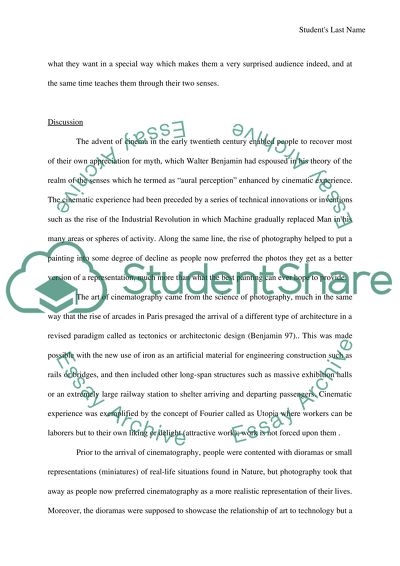Cinematic Experience Essay Example | Topics and Well Written Essays - 750 words. Retrieved from https://studentshare.org/visual-arts-film-studies/1487290-what-is-cinematic-experience
Cinematic Experience Essay Example | Topics and Well Written Essays - 750 Words. https://studentshare.org/visual-arts-film-studies/1487290-what-is-cinematic-experience.


